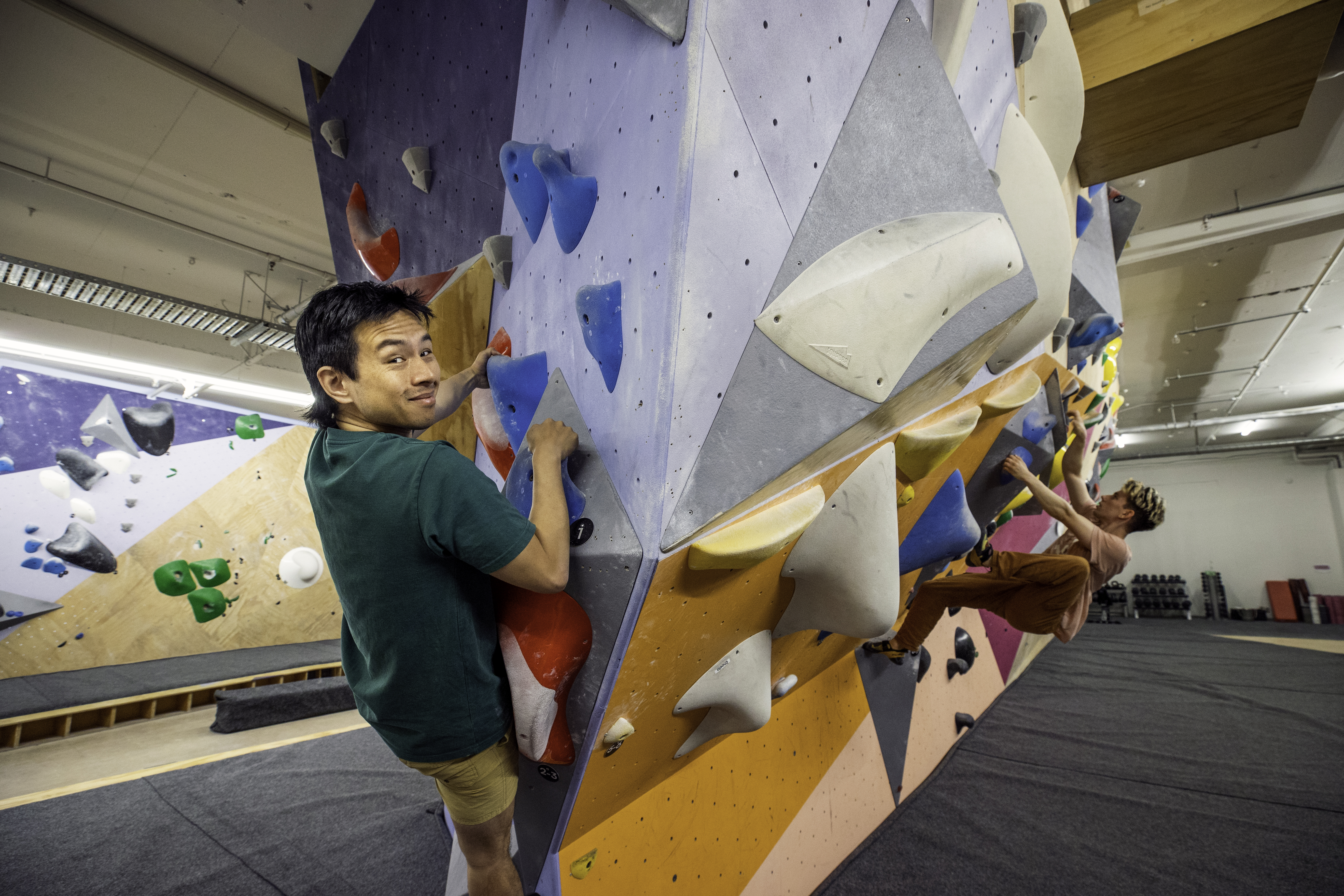Five fun hobbies to make life more interesting
19 December 2024
One thing experts agree on is that hobbies that keep you active, pursuing a passion or being part of a group, can see your wellbeing skyrocket. We investigate five great options for new hobbies that can help you stay happy and well.
Take a painting class
Story by Emily Draper
There’s something about keeping your hands busy that frees up your mind. So, when presented with the opportunity to attend a “paint and sip” night – hosted by Pinot and Picasso – I jumped at the chance.
The central Auckland studio is a small room lined with paint-stained aprons. Our canvases are laid out for us, alongside paper plates with blobs of acrylic colour. A huge draw of art events like these is in what you don’t do: setting up equipment and cleaning up at the end is all taken care of. All we need to do is start painting.
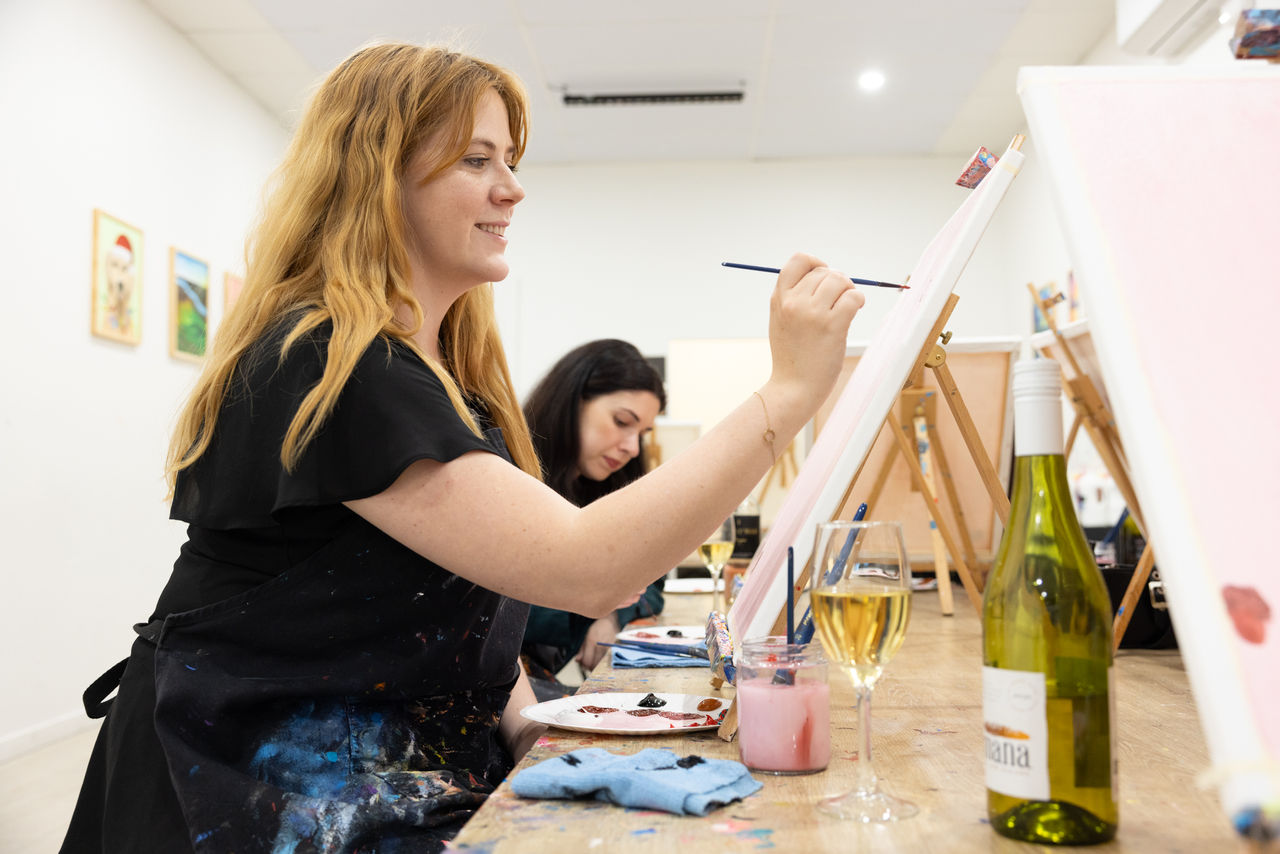
“Take a large glob of white, and a teeny-tiny bit of red.” We are painting cherries: splashes of maroon on a pale pink background. The instructor explains how to create shadows and highlights, noting where our source of light is. Anyone can pick up paints and a canvas at home, but everyone in the room agrees it’s helpful to have some instruction and guidance.
At the end of the three hours, my canvas is far from an artistic masterpiece, but I’ve caught the bug.
For my second class, we take a step up in difficulty – tasked with the creation of a tablescape with a wine bottle, glasses, a slice of melon and a spread of playing cards. Our instructor teaches us how to sketch out our dimensions on the canvas, how to mix colours and alter the design to our own desires, how to create texture and light.
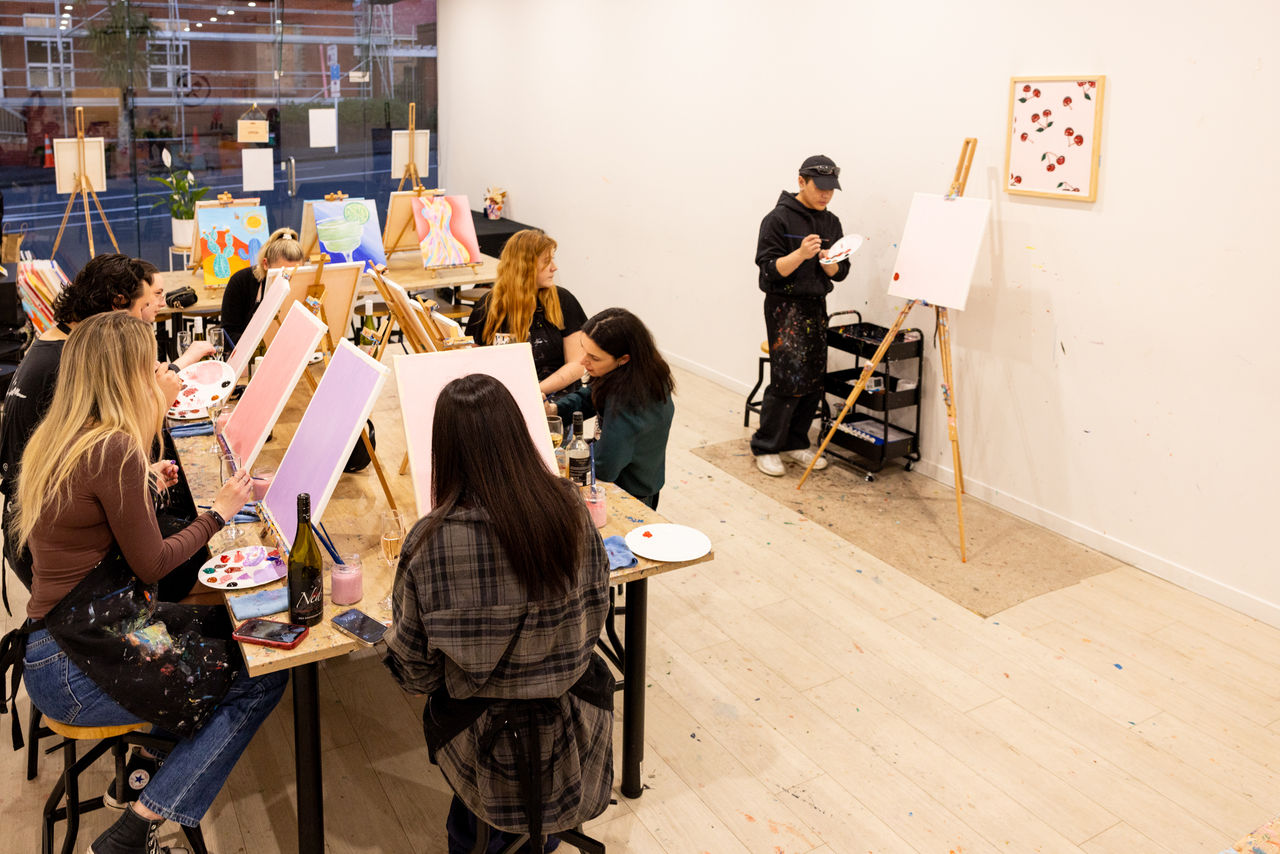
Over my artistic nights, I’ve learned the end result is less important than the process of getting there, which is a great lesson to take away from a few hours at an easel.
Sing with the choir
Story by Claire Finlayson.
I blame it on my sister. A musically adept sort, she’d demand that I sing with her when we were young so she could practice harmonising. Six years younger, I’d always get confused at the crucial moment and pitch my voice up instead of down, or down instead of up. It never ended well.
Chastised, I’ve mostly avoided singing in earshot of other humans since. So, when a friend recently told me about her new choir habit, I was somewhat triggered. But also intrigued.
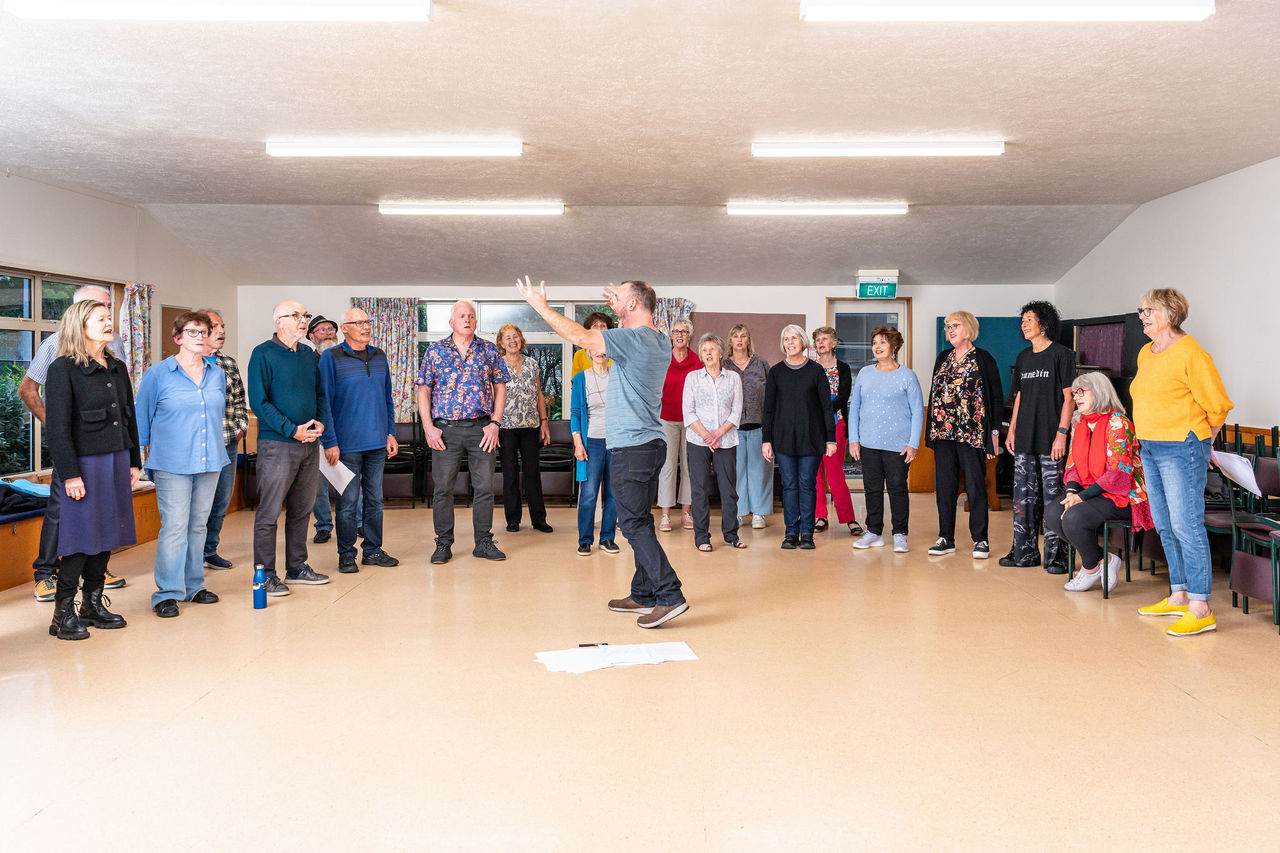
The choir in question is Sunny Side Up. Established 24 years ago, its 30 members meet weekly to throw their voices together in a humble hall in South Dunedin. It’s a group with an open-door policy.
Choirmaster Richard Holland says: “Music is for everyone. Once you have enough people it doesn’t really matter if one or two can’t sing as well as the others – the rest of the group carries them. We can still make a great sound together.”
Though Sunny Side Up mostly sings gospel, it’s not a church-aligned group. One of the choristers, Adrienne, says that while she’s not especially religious, gospel’s uplift factor nudges at her soul. “It’s full of energy and rhythm. It makes me want to move. I suspect there's a ‘spiritual’ side as well – however you define that.”
She’s not wrong. When the soprano-alto-tenor-bass mix comes together, the resulting harmonic swell can make even the most spiritually stagnant soul feel a bit transcendental.

Science has long told us about the benefits of choir singing. Saliva samples taken from choristers have shown changes in stress hormones and immune markers. Letting your vocal chords frolic in the company of others is quite the all-body boost: it’s gym for the brain, balm for a harried life and yielder of great social connection.
Have a go at bouldering
Story by Matt Tso
In the climbing world, bouldering is the discipline that is taking off. Without harnesses and ropes, all you need is a wall or rock formation to scale and a pair of climbing shoes.

Faultline is a specialist bouldering gym in Wellington where I’ve been climbing for the last few weeks with a couple of mates. I’ve discovered that one of the most enjoyable parts of climbing is the time spent on the ground – turns out bouldering is a nice way to hang out.
Bouldering routes – your way up the wall marked by coloured fibreglass holds – are called ‘problems’. They can be as easy as going up a ladder or involve feats that would make Spiderman nervous.
Most problems take less than a minute to complete and are followed by a spell off the wall, when you rest, recover and chat with everyone else.
Whoever introduced ‘problem’ into climbing nomenclature hit the nail on the head, as finding a solution can become an obsession. Each time you pick yourself up off the crash pads, you’re thinking about how to make it to that next section of the wall, and how to do it smarter, with greater efficiency and more panache.
As problems become more complex, a greater degree of strategy is needed, thinking several moves ahead as you might in chess. Coordination, strength and guile are needed, but the problem-solving element makes bouldering not feel like exercise at all.

Socially, physically, and mentally stimulating – bouldering is fun. For someone who prefers outdoor activities over regimented and repetitive exercise, climbing fills a gap when the weather’s lousy for tramping or there isn’t any surf.
Take a communal drumming class
Story by Fiona Terry
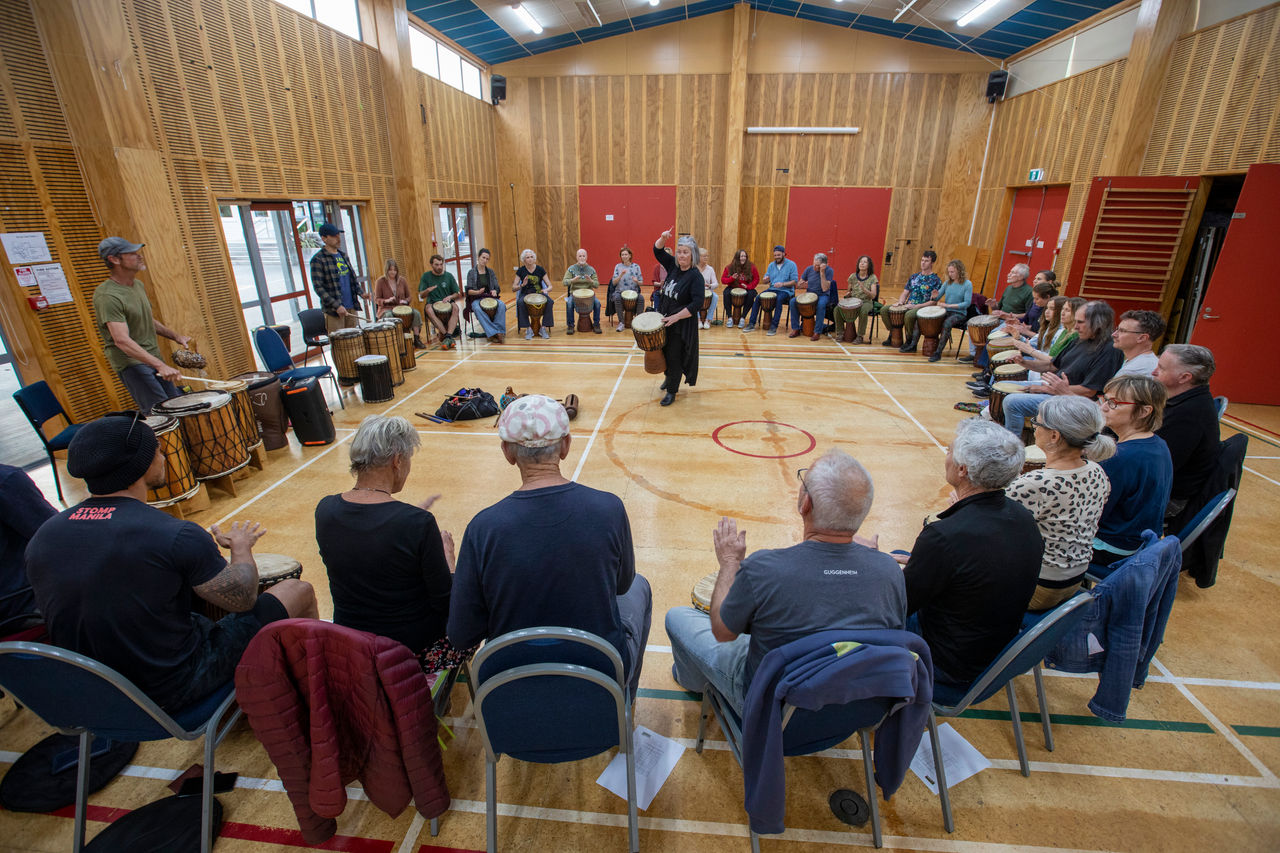
The room is buzzing, my hands are tingling, and as the volume of our drumming grows louder, somehow the effect is to quiet the noise in my mind.
It’s impossible, it turns out, to concentrate on replicating African hand drumming beats while worrying about the credit card bill or events of the day.
I’d joined 30 others in a Nelson hall for a class run by InRhythm’s Kimberley Anderson, who learnt the power of the djembe instrument when looking to switch off from a high-pressure corporate job in Australia.
Kimberley loved the African drumming session so much she went on to facilitate workshops. That was 20 years ago, and since returning to New Zealand in 2014 the Kiwi has continued leading classes here.
“Rhythm calms our limbic system, where our stress response comes from,” Kimberley says.
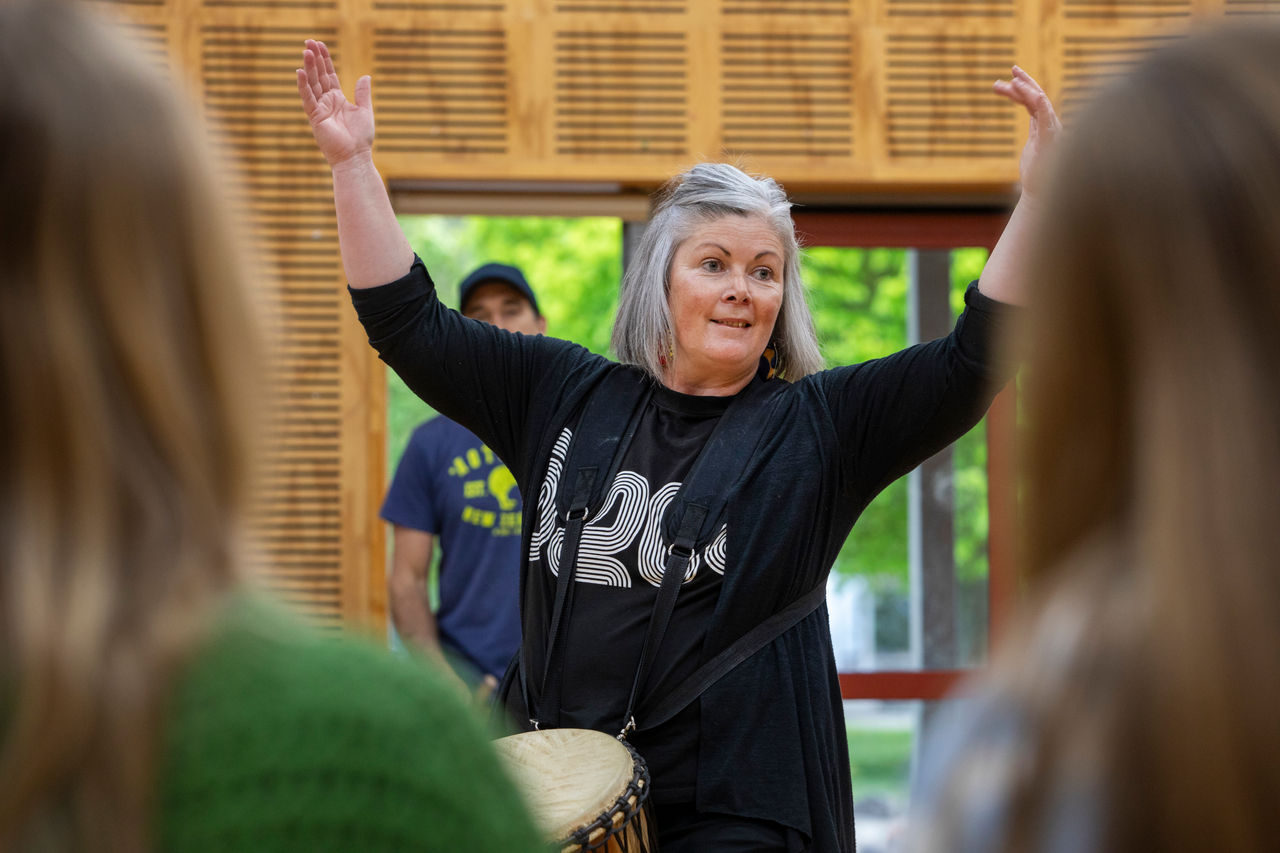
“That’s why we rock and pat babies because anything rhythmic calms our central nervous system.”
Our class is a mix of beginners like me, and more seasoned enthusiasts who’d brought their own drums. “There's no pressure to get it right,” Kimberley reassured. “No judgment. And the concept of musical entrainment means your body will want to do the same thing as all the other bodies in the room.”
Once we grasped some basics, Kimberly lead part of the group into one rhythm and the other with a different beat, creating polyrhythms. The shared sense of creating music feels remarkable and incredibly meditative.
Find your groove at line dancing
Story by Jo Percival
It all starts with the boots. Pointy-toed, calf-height, leather ideally, though ankle-length will suffice. Worn with just about anything, cowboy boots are synonymous with line dancing.
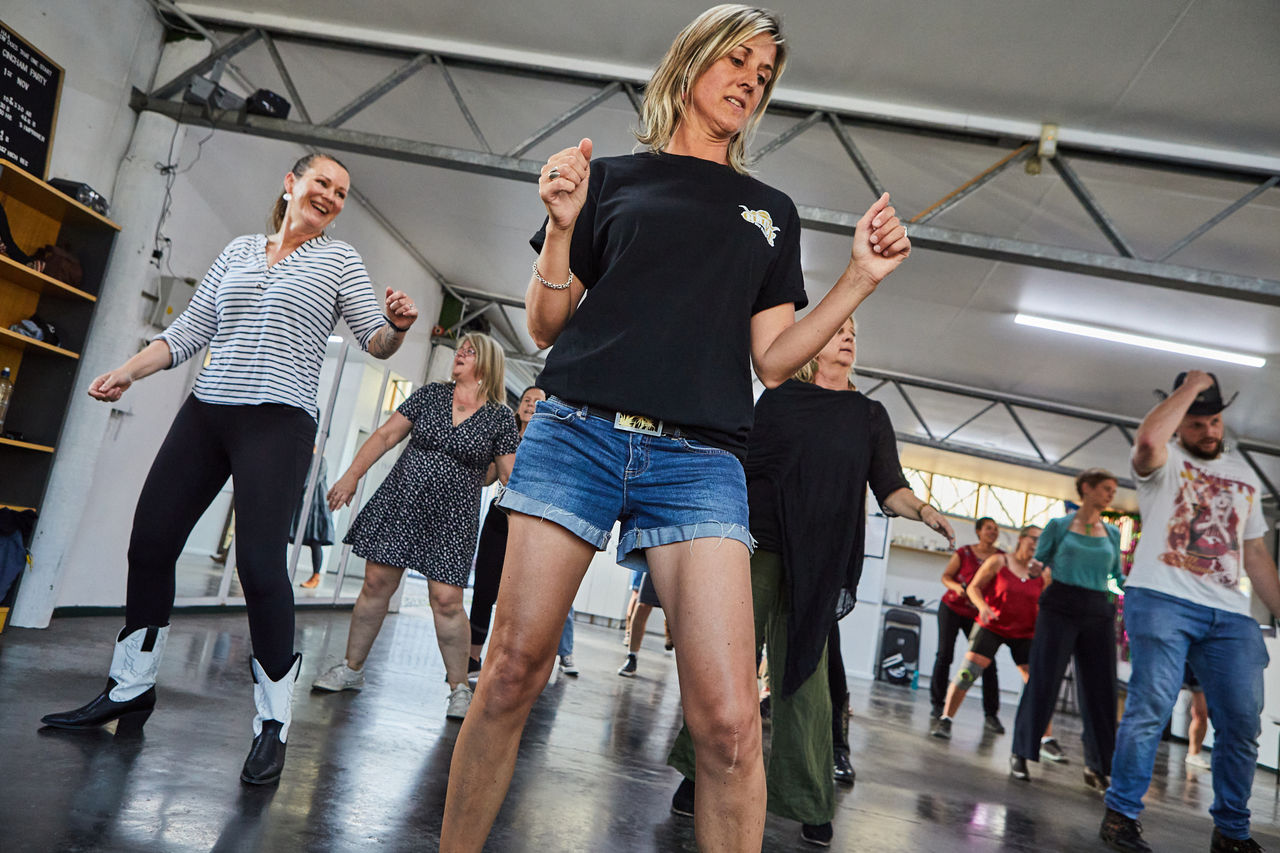
That’s how it began for Rebecca Tostevin who runs the Clive Boot Scootin’ line dancing classes in Hawke’s Bay.
“There was a band at the local pub who always play Wagon Wheel which I’d always wanted to line dance to,” Rebecca says. “So, a friend and I started teaching that one dance and it was so much fun that more people wanted to join in. The whole thing just grew.”
Today, 18 months later, Rebecca runs nine classes a week, catering to absolute beginners through to ‘improvers’ who have been attending regularly.
On a Tuesday morning, wearing my box-fresh pair of cowboy boots, I stand nervously in front of a wall of mirrors. I’m one of about 20 participants. The group is comprised of a full spectrum of ages – a new mum bounces her baby on her hip as she moves alongside sprightly silver-haired women in their 70s.
Microphone in hand, Rebecca walks us through the basic steps of a dance. We follow along, foot focused, mimicking her movements. “You’ve got to cook the noodles before you add the spice,” she explains, and once we’ve run through the basic routine, we do it to music.
Grapevine, rocking chair, shuffle, weave, pivot. It’s a mental as well as physical workout, trying to remember the order of steps, which way to turn around the room.

“With line dancing, you’re laughing, you’re moving, you’re connected with people,” says Rebecca. "You don’t even know these people but if you dance beside someone and you’re dancing in sync – it’s just good for your soul.”

